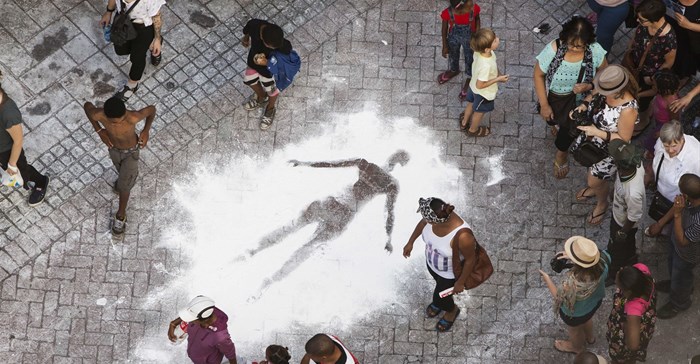
Included in this year’s diverse programme are top South African and African artists from Cape Town, Durban, Johannesburg, Eastern Cape, Zimbabwe and Namibia, who will be joined by international acts from the Netherlands, France and Switzerland.
From vertical dancers on city walls to performance activity in parked cars, ITC 2019 will activate city spaces from the Castle to the station, the fountain to the Cathedral and beyond.
“An emerging theme from this year’s proposals is work based in classical African tradition. Works that explore how classical African performance and rituals work inside of the urban space. This is also to create atmospheres of cleansing and interiority within these commercially driven, materialistic spaces,” says Pather.
Joining Pather as a curatorial fellow for the festival is internationally acclaimed dancer and choreographer of African Indigenous and cross-cultural dance, Elvis Sibeko, who brings extensive experience with traditional African productions.
Sibeko will be curating two programmes – one traversing the city centre, the other with the Castle of Good Hope as a backdrop – that brings together contemporary and classical African performance of various kinds.
South Africa ranks as one of the highest perpetrators of violence against women in the world. Foregrounding these issues in a public space is essential. And no amount of bringing this to the centre and in public will be enough,” adds Pather.
Pather explains that as our environment becomes more trying, riddled with complexities and debates around land, poverty, race, safety and security and the environment, there is growing insularity. Public art creates the circumstances for emotions to be stirred, and for discussions to take place publicly.
He goes on to say that public art combines the intimacy of art with the public encounter. Infecting the City creates a space for issues to be raised and debated, which is needed in the country now more than ever.
More than 20 years into democracy, South Africa is still one of the most unequal countries in the world and spaces where we can feel and think together are becoming increasingly important.
The festival will comprise four routes winding their way through the cityscape – two daytime routes, from 12.30pm to 4.30pm, and two evening routes, from 6pm to 9pm.
For information about artists and works represented at this year’s event, visit www.infectingthecity.com.